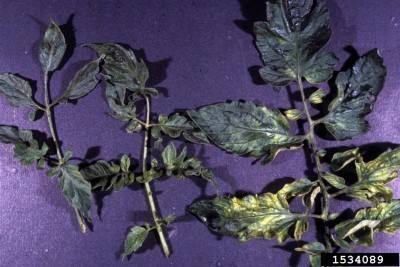






If you’ve noticed an outbreak of leaf mottling along with blistering or leaf curl in the garden, then you may have plants affected by TMV. Tobacco mosaic damage is caused by a virus and is prevalent in a variety of plants. So exactly what is tobacco mosaic virus? Keep reading to find out more, as well as how to treat tobacco mosaic virus once it’s found.
Although tobacco mosaic virus (TMV) is named for the first plant in which it was discovered (tobacco) back in the 1800s, it infects over 150 different types of plants. Among plants affected by TMV are vegetables, weeds and flowers. Tomato, pepper and many ornamental plants are struck annually with TMV. The virus does not produce spores but spreads mechanically, entering plants via wounds.
Two scientists made the discovery of the first virus, the Tobacco Mosaic Virus, in the late 1800’s. Although it was known to be a damaging infectious disease, tobacco mosaic was not identified as a virus until 1930.
Tobacco mosaic virus does not usually kill the plant that is infected; it does cause damage to flowers, leaves and fruit and stunts a plant’s growth, however. With tobacco mosaic damage, leaves may appear mottled with dark green and yellow-blistered areas. The virus also causes leaves to curl.
Symptoms tend to vary in severity and type depending on the light conditions, moisture, nutrients and temperature. Touching the infected plant and handling a healthy plant that may have a tear or nick, whereby the virus can enter, will spread the virus.
Pollen from an infected plant can also spread the virus, and seeds from a diseased plant can bring the virus to a new area. Insects that chew on plant parts may carry the disease as well.
There has not yet been found a chemical treatment that effectively protects plants from TMV. In fact, the virus has been known to survive for up to 50 years in dried plant parts. The best control of the virus is prevention.
Reducing and eliminating sources of the virus and the spread of insects can keep the virus kept under control. Sanitation is the key to success. Garden tools should be kept sterilized.
Any small plants that appear to have the virus should be removed immediately from the garden. All plant debris, dead and diseased, should be removed as well to prevent the spread of the disease.
In addition, it is always best to avoid smoking while working in the garden, as tobacco products can be infected and this can spread from gardener’s hands to plants. Crop rotation is also an effective way to protect plants from TMV. Virus-free plants should be purchased to help avoid bringing the disease into the garden.
Copyright © www.100flowers.win Botanic Garden All Rights Reserved